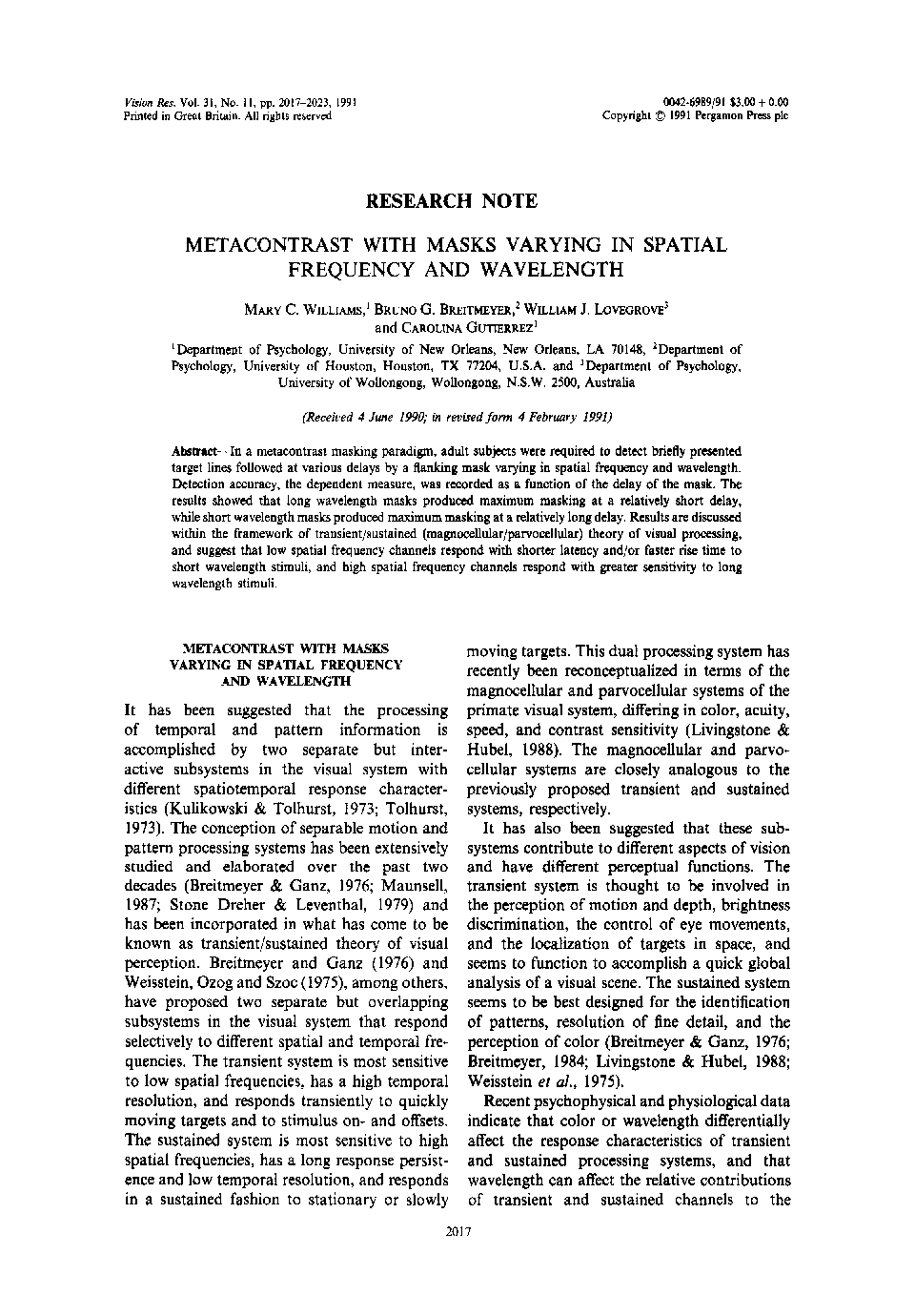| Article ID | Journal | Published Year | Pages | File Type |
|---|---|---|---|---|
| 4038796 | Vision Research | 2017 | 7 Pages |
Abstract
In a metacontrast masking paradigm, adult subjects were required to detect briefly presented target lines followed at various delays by a flanking mask varying in spatial frequency and wavelength. Detection accuracy, the dependent measure, was recorded as a function of the delay of the mask. The results showed that long wavelength masks produced maximum masking at a relatively short delay, while short wavelength masks produced maximum masking at a relatively long delay. Results are discussed within the framework of transient/sustained (magnocellular/parvocellular) theory of visual processing, and suggest that low spatial frequency channels respond with shorter latency and/or faster rise time to short wavelength stimuli, and high spatial frequency channels respond with greater sensitivity to long wavelength stimuli.
Related Topics
Life Sciences
Neuroscience
Sensory Systems
Authors
Mary C. Williams, Bruno G. Breitmeyer, William J. Lovegrove, Carolina Gutierrez,
